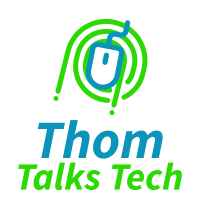At-Home Certification: The New Normal

2020 will go down in history as the year that changed the world. A global pandemic forced everyone to stay indoors, employers were forced to embrace work-from-home, and companies that supported employees had to respond. One industry that responded quickly was certification. Pearson Vue had already allowed some certification to be taken at home, but now most major technology vendors got on board. This opens up a new world of opportunity and a degree of accessibility that benefits everyone in the IT industry.
I recently completed the Microsoft Azure Foundations certification (AZ-900) from the convivence of my own home. There were many positives and a few interesting differences from the traditional certification experience.
Registration and Starting the Exam
The process of registering for a remotely proctored certification is very similar to that of a certification proctored at a traditional testing center. You follow a link to Pearson Vue from the exam’s information page, for example, Microsoft Azure Fundimentals. From there, go through the steps to choose your date and time, pay or enter a voucher, and you’re done.
Starting the exam will depend on the vendor. There was a link in an email for the Microsoft exam, but Amazon or VMware will likely have a different procedure. This link will be critical on the day of your exam. You don’t want to lose it and be late to start. Upon starting the exam, there are some extra precautions Pearson takes to safeguard the exams. First, you must download a testing program that creates a secure connection to the testing server. Then they text you a link to take photos of your testing space. There are rules about not having anything on your desk. You also can’t be within arm’s reach of paper, writing instruments, electronics, or any cups. If there’s a whiteboard, it must be erased. You must have a webcam.
If your pictures pass muster, your proctor will start the exam. They ask you to start the process about 30 minutes early. Be aware that the exam could start up to 15 minutes after your scheduled time, however many people have reported that they started almost immediately after submitting all of the required pictures.
Positives
There are many benefits to in-home or remote exams. Everyone with the internet has access, so rural technologists have an opportunity to prove their skills. You also don’t have to travel anywhere to take the exam, giving you more time to study or relax before your chosen time. The room must be silent, and you must be the only person in there, so you don’t have to worry about a noisy neighbor interrupting your concentration. Lastly, you can choose the gear. You no longer need to use a 12-inch monitor from 2005 with a gross mouse and a pc with a 486 processor. Of course, you can choose to use that, but you don’t have to.
Difficulties
There aren’t very many drawbacks, though the rules about what you can and cannot have in the room with you can lead to some stress. If you have small children or pets, make sure they aren’t close enough to be heard. Any sound of someone talking could cause the test to be invalidated.
It isn’t clear if 2020 is the year of the VDI, but it is undoubtedly the year that technology vendors embraced remote certification. We hope it continues one the world returns to normal.
